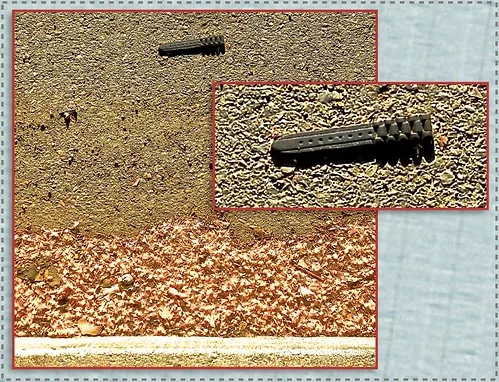Uncovering the Enigma: Alien Artifacts and Their Impact on Our Understanding
In a world filled with mysteries and unexplained phenomena, few topics capture the imagination quite like the idea of alien artifacts. These enigmatic relics from beyond our planet have fascinated scientists, archaeologists, and conspiracy theorists alike.
With their potential to reshape our understanding of the universe, the study of alien artifacts has become a captivating field of exploration.
In this article, we will delve into the mysterious world of alien artifacts, explore their impact on our understanding, and examine the controversies and debates that surround them.
Jump to Section
Introduction
From ancient tales of gods and celestial beings to modern sightings of unidentified flying objects (UFOs), the existence of extraterrestrial life has long been a subject of intrigue.
Alien artifacts, physical objects believed to have originated from civilizations beyond Earth, provide tangible evidence that fuels our curiosity.
These artifacts, ranging from strange metallic objects to intricate relics with unexplained hieroglyphics, have the potential to rewrite history and challenge the boundaries of human knowledge.
The Mysterious World of Alien Artifacts
The Definition and Nature of Alien Artifacts
Alien artifacts encompass a wide range of objects that are believed to have been created by beings from other planets or dimensions.
These artifacts can take various forms, including technological devices, ancient relics, and even architectural structures.
They often possess characteristics that defy conventional explanations, such as advanced materials, intricate designs, and inexplicable functionality.
Historical Accounts of Alien Artifacts
Throughout history, there have been numerous accounts and legends surrounding the discovery of alien artifacts.
From the ancient civilizations of Egypt and Mesopotamia to the more recent incidents like the Roswell crash, these stories have fueled the imagination and sparked debates among researchers.
These historical accounts provide glimpses into the existence of advanced civilizations and raise questions about our place in the universe.
Scientific Exploration and Discovery
In recent years, scientific advancements have allowed for more rigorous exploration and analysis of potential alien artifacts.
Researchers have developed sophisticated tools and techniques to study these objects, ranging from carbon dating and spectroscopy to DNA analysis and x-ray imaging.
These scientific investigations aim to unlock the secrets held within these artifacts and shed light on their origins and purpose.
The Impact of Alien Artifacts on Our Understanding
Advancements in Technology and Knowledge
The study of alien artifacts has led to significant advancements in technology and knowledge.
By analyzing the advanced materials and technologies employed in these artifacts, scientists have gained insights into potential breakthroughs in fields such as energy generation, medicine, and transportation.
Alien artifacts have become a wellspring of inspiration for researchers seeking innovative solutions to the challenges facing humanity.
| Technological Advancements from Alien Artifacts |
|---|
| Nanotechnology for efficient energy storage |
| Advanced medical devices and treatments |
| Anti-gravity propulsion systems |
| Sustainable energy sources |
| Intergalactic communication technologies |
Shifting Paradigms in History and Archaeology
The existence of alien artifacts challenges conventional historical and archaeological paradigms. These objects often possess characteristics that suggest the presence of advanced civilizations far beyond what we believe is possible given the timeline of human development.
The discovery of such artifacts forces us to reevaluate our understanding of human history and consider the possibility of extraterrestrial influences on our past.
- The presence of advanced technological artifacts in ancient civilizations challenges the notion of linear progress in human development.
- Ancient structures and monuments with unexplained architectural precision and alignment raise questions about the ancient knowledge and techniques employed.
- Artifacts with unfamiliar symbols and hieroglyphics challenge our understanding of ancient languages and communication systems.
- Evidence of advanced astronomical knowledge in ancient civilizations suggests a deeper understanding of the cosmos and potential extraterrestrial connections.
The Influence on Extraterrestrial Life Theories
The discovery of alien artifacts has fueled speculation and shaped theories about the existence of extraterrestrial life. These artifacts provide tangible evidence that supports the notion that we are not alone in the universe.
Furthermore, the advanced technologies and designs found in these artifacts suggest that other civilizations may have achieved levels of technological development far surpassing our own.
- Alien artifacts strengthen the theory that extraterrestrial life exists and has visited Earth.
- They provide evidence of intelligent beings capable of interstellar travel and advanced technological capabilities.
- The study of these artifacts contributes to the search for habitable exoplanets and the understanding of potential life forms in the universe.
The Controversies and Debates Surrounding Alien Artifacts
Skepticism and Criticism
The study of alien artifacts is not without its skeptics and critics. Many argue that the objects believed to be alien artifacts are simply misidentified natural phenomena or products of human creativity and ingenuity.
Skeptics often demand rigorous scientific evidence to support claims of extraterrestrial origins and argue that the burden of proof lies with those making extraordinary claims.
- Skeptics question the validity of the evidence presented and emphasize the need for scientific rigor in the study of alien artifacts.
- They argue that alternative explanations, such as natural occurrences or human-made objects, should be thoroughly explored before attributing them to extraterrestrial origins.
- Critics highlight the limitations of available evidence and argue that conclusive proof of alien artifacts is yet to be found.
Conspiracy Theories and Government Cover-ups
The study of alien artifacts is closely associated with conspiracy theories and claims of government cover-ups.
Some believe that governments around the world possess knowledge of alien artifacts and are actively hiding this information from the public.
These theories often draw upon alleged UFO sightings, secret government programs, and leaked documents to support their claims.
- Conspiracy theorists argue that governments and powerful organizations suppress information about alien artifacts to maintain control over the public’s perception of reality.
- Claims of recovered alien technology and secret research programs fuel suspicions of a hidden agenda.
- Leaked documents and testimonies from alleged whistleblowers are often cited as evidence of government involvement in covering up the existence of alien artifacts.
The Role of Media and Pop Culture
The influence of media and pop culture cannot be overlooked when discussing the controversies and debates surrounding alien artifacts. Movies, television shows, and books often portray alien artifacts as mysterious objects of great power and significance.
While this portrayal captivates audiences and generates interest, it can also perpetuate misinformation and sensationalize the study of these artifacts.
- Media and pop culture contribute to the public’s perception of alien artifacts, often blurring the lines between fact and fiction.
- Sensationalized depictions of alien artifacts in entertainment media can lead to misconceptions and exaggerated expectations.
- Responsible reporting and scientific accuracy are essential in separating reality from fiction and fostering a balanced understanding of the topic.
Studying Alien Artifacts: Methods and Challenges
Archaeological Approaches
The study of alien artifacts often draws upon archaeological methods and approaches. Archaeologists analyze the physical characteristics, context, and cultural significance of these objects to gain insights into the civilizations that may have created them.
However, studying alien artifacts presents unique challenges due to their unfamiliarity and potential extraterrestrial origins.
| Archaeological Approaches to Alien Artifacts |
|---|
| Stratigraphy and context analysis |
| Comparative analysis with known ancient civilizations |
| Artifact typology and classification |
| Preservation techniques for fragile or unique materials |
| Digital documentation and 3D modeling |
Analyzing Alien Technology
Understanding the advanced technology found in alien artifacts requires interdisciplinary collaboration and cutting-edge scientific methods.
Researchers employ a range of techniques, including material analysis, imaging technology, and reverse engineering, to unravel the mysteries behind these extraordinary objects.
| Analyzing Alien Technology |
|---|
| X-ray spectroscopy and scanning electron microscopy |
| Carbon dating and isotopic analysis |
| DNA sequencing and genetic analysis |
| Reverse engineering and technology replication |
| Quantum computing and advanced data analysis |
Ethical Considerations
The study of alien artifacts raises ethical considerations regarding ownership, preservation, and cultural sensitivities.
Respect for the cultures and entities associated with these artifacts is paramount, as is the responsible handling and sharing of information to ensure the integrity of the research and its impact.
- Cultural sensitivity and collaboration with indigenous communities in cases where artifacts are discovered on their ancestral lands.
- Responsible acquisition and preservation of artifacts to prevent looting or destruction.
- Transparent and ethical dissemination of information to promote open dialogue and prevent exploitation.
Discoveries and Speculations: Famous Alien Artifacts
Roswell Incident and the Debris
One of the most famous cases of alleged alien artifacts is the Roswell incident. In 1947, an unidentified object crashed near Roswell, New Mexico.
The recovered debris was initially claimed to be a "flying disc," leading to widespread speculation of extraterrestrial origins.
While the official explanation was a weather balloon, conspiracy theories persist, fueling debates about what the debris truly represented.
Ancient Astronaut Theory and Ancient Artifacts
The ancient astronaut theory posits that advanced extraterrestrial beings visited Earth in ancient times and influenced human civilization.
Ancient artifacts, such as the crystal skulls and the Piri Reis map, are often cited as evidence supporting this theory.
These artifacts exhibit characteristics that defy explanation within the context of the known ancient civilizations, leading to speculation about their extraterrestrial origins.
The Nazca Lines and Other Enigmatic Structures
The Nazca Lines in Peru are enormous geoglyphs etched into the desert floor. These massive figures, visible only from high above, depict various animals, plants, and geometric shapes.
The purpose and creation of these lines remain a mystery, with some suggesting that they were created by ancient astronauts as landing sites or signals.
Similarly, other enigmatic structures like Stonehenge and the Great Pyramids of Egypt have been linked to extraterrestrial influence.
The Wow! Signal and Extraterrestrial Communications
In 1977, astronomers detected a strong narrowband radio signal from space, known as the Wow! Signal.
This signal, originating from the Sagittarius constellation, remains unexplained and has led to speculation about its potential extraterrestrial origin. The Wow!
Signal and other anomalous signals continue to fuel research and speculation about the possibility of communication with intelligent beings from other worlds.
Conclusion
The study of alien artifacts is a captivating field that pushes the boundaries of human understanding.
From the mysteries of ancient civilizations to the potential for interstellar travel, these artifacts have the power to reshape our perception of the universe and our place within it.
While controversies and debates surround the authenticity and significance of these objects, they continue to inspire curiosity and fuel scientific exploration.
As our knowledge and technology advance, the enigma of alien artifacts will undoubtedly remain a subject of fascination for generations to come.
FAQ
Are there any proven alien artifacts?
No proven alien artifacts have been universally accepted by the scientific community. While there are many intriguing objects that raise questions, conclusive evidence of extraterrestrial origins is yet to be found.
How do scientists differentiate between natural phenomena and alien artifacts?
Scientists employ rigorous methodologies and scientific analysis to differentiate between natural phenomena and potential alien artifacts. They rely on a combination of physical characteristics, context, and scientific testing to assess the likelihood of extraterrestrial origins.
Can the study of alien artifacts lead to practical technological advancements?
The study of alien artifacts has the potential to inspire practical technological advancements.
By analyzing advanced materials and technologies found in these artifacts, researchers can gain insights that may contribute to breakthroughs in various fields such as energy, medicine, and communication.
Why are there so many conspiracy theories surrounding alien artifacts?
Conspiracy theories surrounding alien artifacts arise from a combination of factors, including the secrecy surrounding government programs, alleged cover-ups, and sensationalized media depictions. These theories often captivate public imagination but lack substantial evidence.
How can the study of alien artifacts benefit humanity?
The study of alien artifacts can benefit humanity by expanding our understanding of the universe, inspiring technological advancements, and challenging our preconceived notions of history and existence.
It encourages open-mindedness, fosters scientific curiosity, and promotes a deeper appreciation for the vastness of the cosmos.
Greetings fellow space travelers, I am Draco Blaze, creator of Alienated Media who is passionate about exploring the unknown and writing about my experiences with extraterrestrial life.
My focus is on alien encounters and creating thought-provoking sci-fi short stories that transport readers to new worlds and realities.
Feel free to contact me at [email protected].





